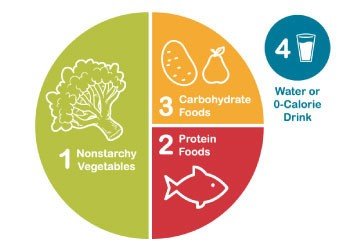[ad_1]
Get Help with New Nutrition Resources
Even though 2022 is in full swing, keep your weight loss goals and healthy eating resolutions in mind—it’s not too late to take steps to reach them. We want you to succeed, whether you have made progress since January, gotten off track, or need to start making changes to reach your goals. If you have diabetes or trying to prevent it, the American Diabetes Association (ADA) has a series of nutrition-related videos and handouts you can read while watching them.
Healthy Ways to Cook
You don’t have to give up your favorite foods to eat healthy! Learn new ways to cook and prepare your meals so you get the right portions of different types of food. Cooking foods in a healthy way doesn’t mean sacrificing taste or time. Learn about time savers and flavorful substitutes! Here’s some of what’s covered:
- Learn healthy ways to add flavor to food.
- Instead of frying, try alternative methods of cooking.
- Learn about the fat content in cooking.
Food Label Know How
Knowing how to read a food label is essential to eating healthy. In this video, learn how to decode the information on the nutrition label, such as:
- Serving size
- Carbs and added sugars
- Calorie counts
- Healthy fats vs. unhealthy fats
Navigating the Grocery Store
What do your grocery store trips look like? Making a well-rounded grocery list is the first step in creating a balanced meal plan. Here are some of what’s covered:
- Planning your meals and ingredients ahead of time
- Navigating the different sections of the store.
- Looking for healthier alternatives to your favorite foods
- Differences between whole foods and processed foods
Be mindful of your grocery store trips, learn how to be resourceful and prep your groceries once you get home.
Food Groups and Portion Sizes
Understanding how food groups work together can help you work toward your goals and be healthier. Learn about saturated fat, added sugar, and sodium.
- Vegetables: Many non starchy vegetables are low in calories and high in fiber
- Protein: Helps manage blood glucose (blood sugar) and weight
- Carbohydrates: Bread, pastas, cereals, and fruit affect blood glucose
- Dairy: Contains protein, calcium, and vitamin D
- Fats: Avocado, olives, nuts, and seeds support heart health
- Extras: Desserts can be consumed in moderation
Plan Your Plate
Portion size is another important way to ensure healthy eating. What does your plate look like? The ADA has developed the Diabetes Plate Method to help you navigate portion sizes. Your plate should follow these guidelines:
- Fill 1/2 of the plate with non-starchy vegetables, such as broccoli or green beans.
- Fill 1/4 of the plate with grains, starchy vegetables, or beans and lentils.
- Fill 1/4 of the plate with protein such as lean chicken.

Overall, include an appropriate portion of the five food groups that are the foundation for healthy eating: vegetables, grains, protein, dairy, and fruit.
Sugar Substitutes
One of the best ways to lead a healthy lifestyle is to avoid foods, quantities, and ingredients that don’t support your healthy eating habits. Sugar substitutes are sweeteners that are used instead of table sugar. Sugar substitutes are often sweeter than sugar but have fewer calories. Because of this, it takes only a small amount to sweeten foods and beverages. If you’re trying to reduce sugar in your diet, you may be turning to products sweetened with sugar substitutes. They are found in a variety of foods and drinks labeled as “sugar-free” or “no added sugar.”
We hope these resources help your healthy habits and lifestyle choices stay on track to meet your 2022 goals!
[ad_2]
Source link

